Module Three: Track progress and use outcome of assessments
By the end of this module, you will…
- Be aware of the different types of assessment and how to use it to review children’s progress
- Confidently use outcome of assessment to identify next steps in children’s learning
Why Assess?
- Note down all the reasons why it is important to assess children
- How often should you assess and what do you do with the outcome of assessment?
Response to Activity 1 (Why assess?)
- To evaluate progress from starting points
- Track progress to review if each child is making progress in line with expectations
- Identify and promptly address noted gaps in children’s learning
- Make observations of any concerns which will be shared with parents and make referrals to external professionals (as required with parental consent)
- Feedback to children on how well they are doing and identify next steps for children’s learning
- Share children’s progress with parents
Types of Assessment
There are two types of assessment :
- Formative assessment
- Summative assessment
What is Formative Assessment?
- This is the collection of evidence of children’s progress over a specific period of time. This process assists the practitioner to access information about the children’s stage of development and their individual learning needs.
- To be effective, the outcome of assessment is to routinely use to identify and plan next steps for learning.
What is Summative Assessment?
- Summative assessment consists of all the information gathered from formative assessment of children from their starting point on entry to a nursery/school. This gives an indication of children’s stage of development (progress towards achieving a good level of development in Early Years)
- Successful settings compiles a comprehensive progress data of children on all areas of learning (prime and specific areas) and makes a comparison of the progress of groups of children. (Such as boys and girls, children learning English as additional language and those whose first language is English, special educational needs and children without SEN)
Methods of Assessment
- Focussed observations to note specific skill or explore concerns about children’s progress
- Ongoing observations
- Review of children’s work, drawings, writing, colouring activities
- Records of discussions with children
- Verbal Feedback
- Photographs
- Video and Audio recordings
Activity 1
- Use the notes of observation from slide 34 to make a formative assessment for a specific group of children.
- Note down any gaps in their skills development linked to one prime area and one specific area
- How will you use the information gathered to address the identified gaps?
Sample Marking Code for Reception/KG2
D:Discussed ( Adult discussion of work-stickers and identification of next steps for improvement
I:Independent workingSW: Shared Work (working in a pair or a group)
S: Supported (given guidance and support by an adult)
Visual Feedback:Thumbs up thumbs down, smiley faces sad faces etc
Examples of Assessments notes of observation of children’s learning (and next steps!)

Another example of Assessments notes of observation of children’s learning (and next steps!)
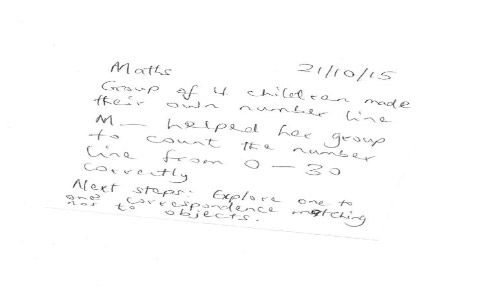
Examples of (Higher ability) Reception KG2/FS2 children’s work Continued
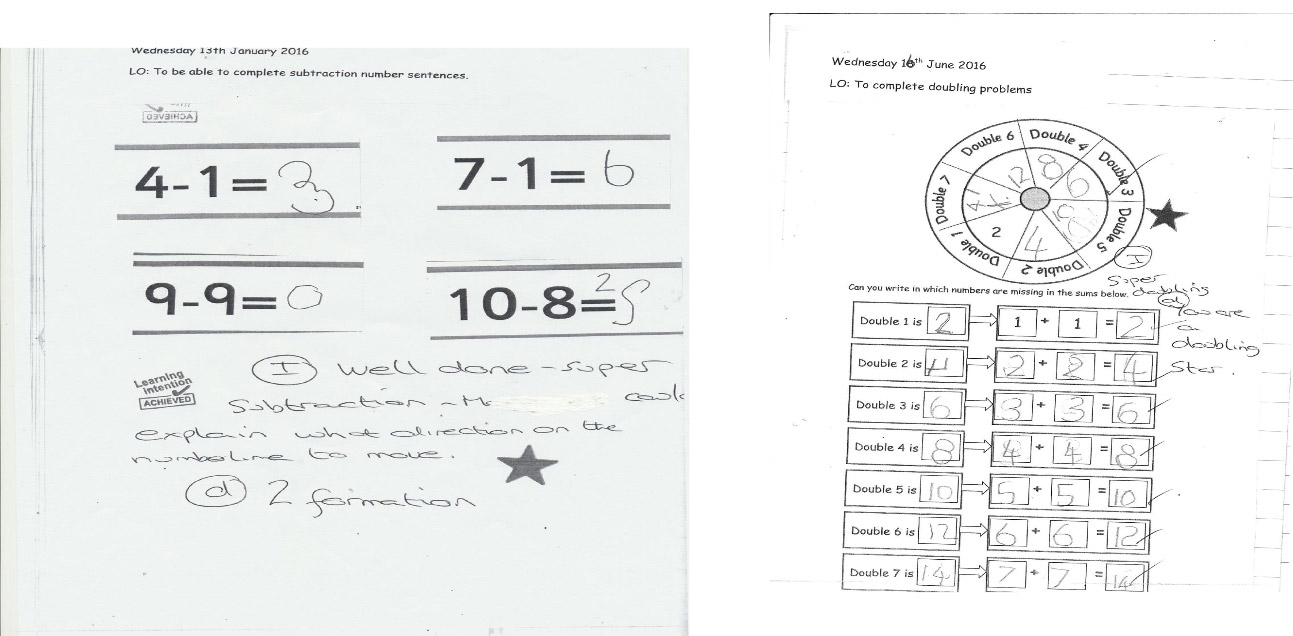
Examples of (Higher Ability) Reception (KG2/FS2) children’s work
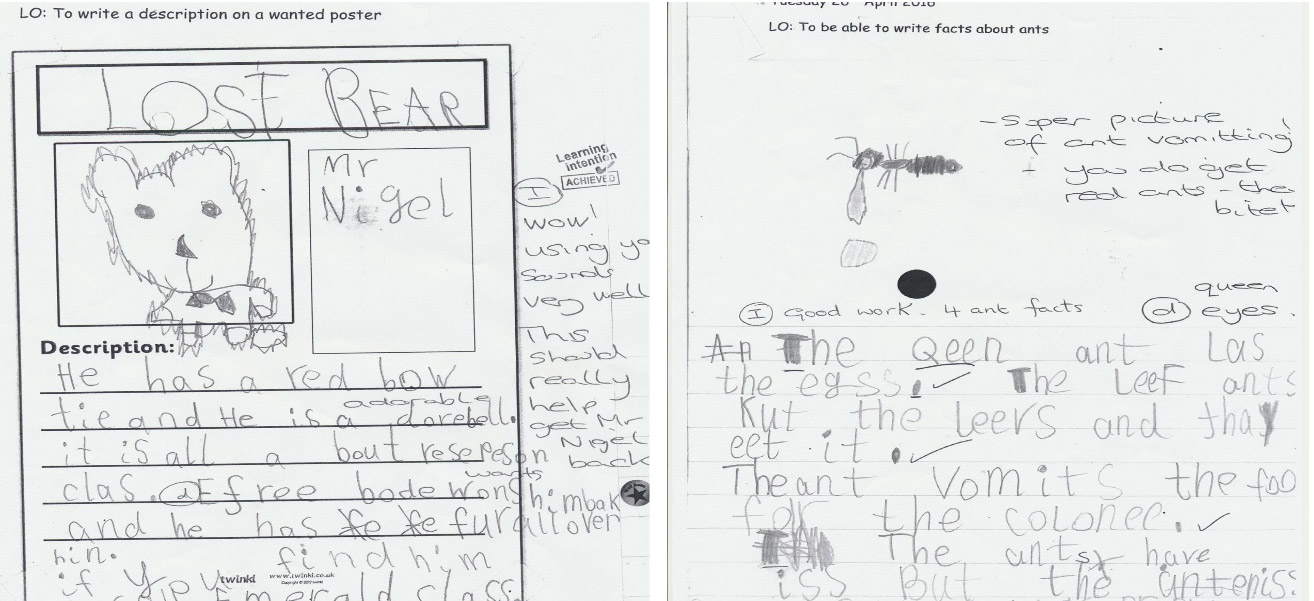
Examples of (Higher Ability) Reception (KG2/FS2) children’s work
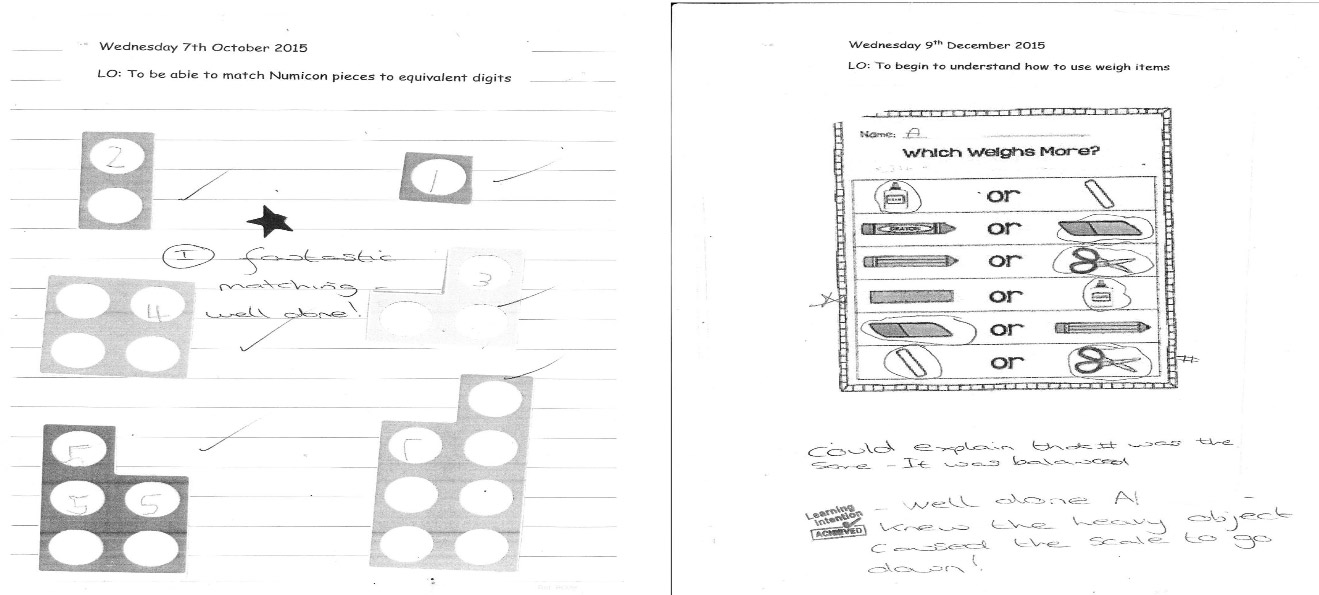
Examples of (Higher Ability) Reception (KG2/FS2) children’s work
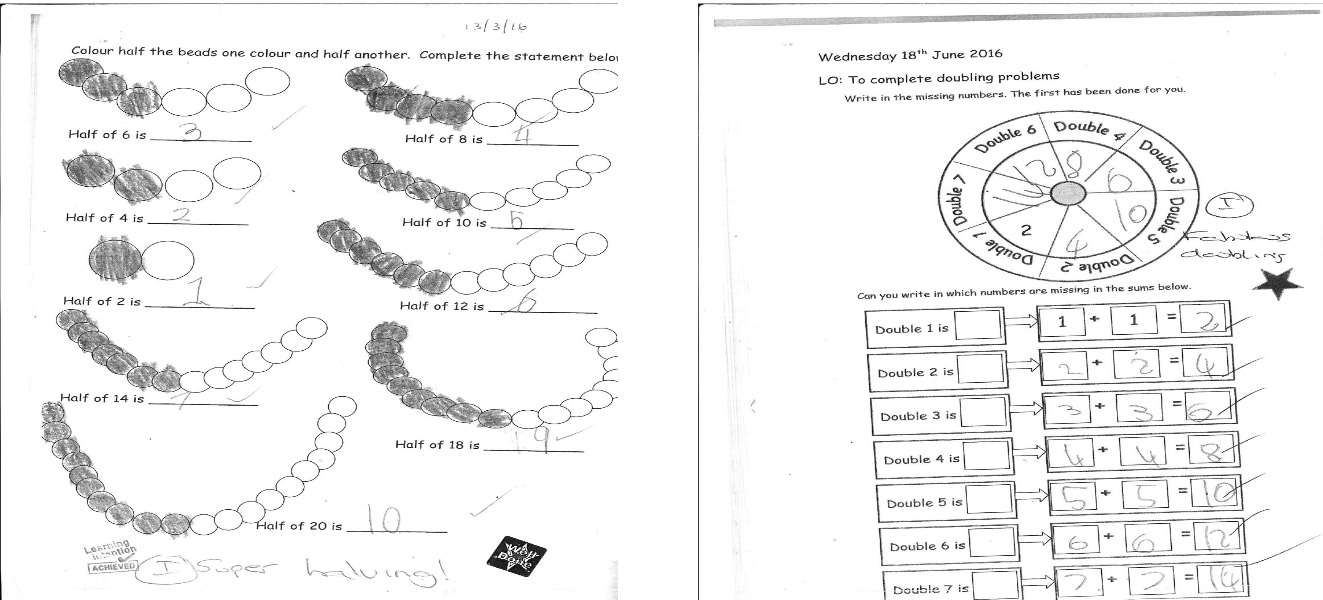
Examples of (Higher Ability) Reception (KG2/FS2) children’s work
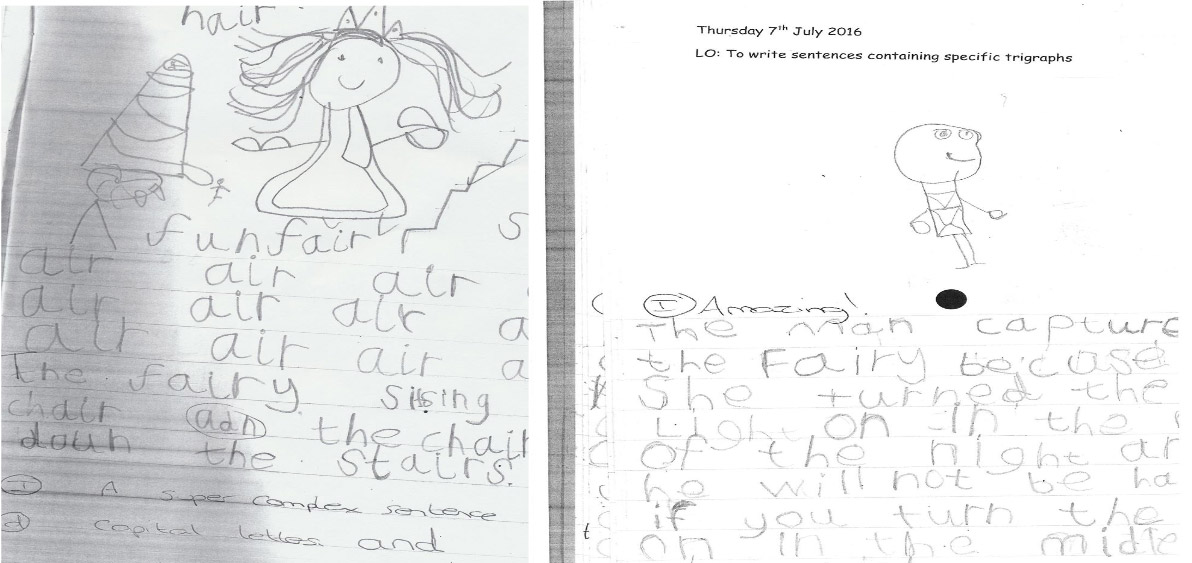
Examples of (Higher Ability) Reception (KG2/FS2) children’s work
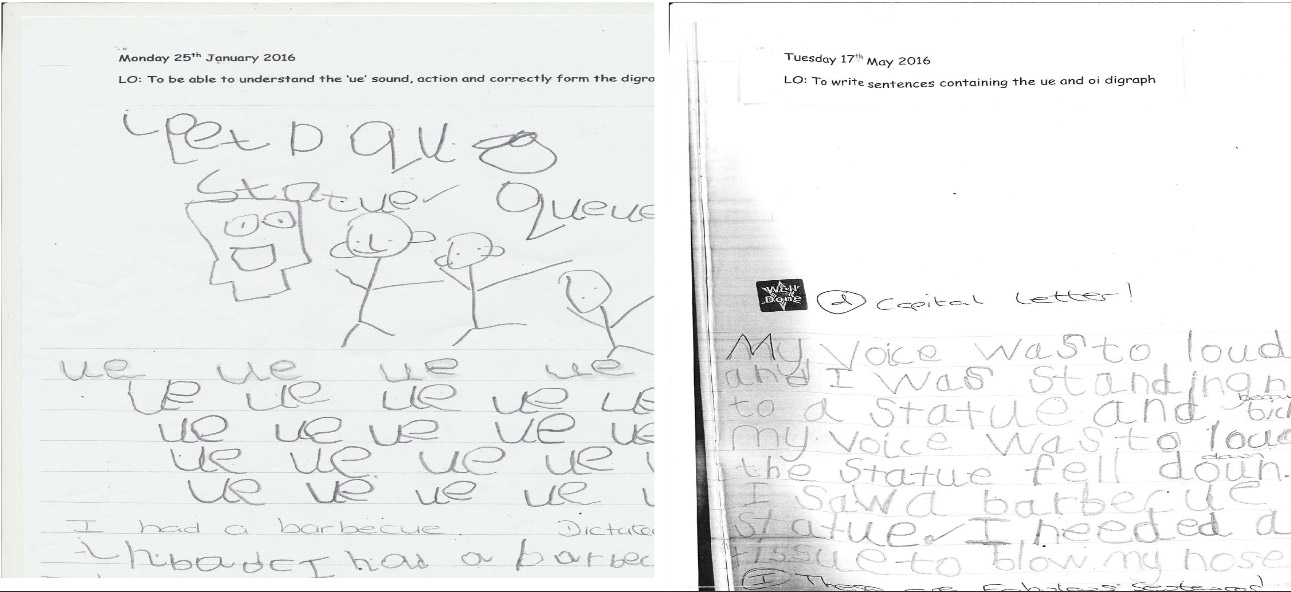
Examples of (Higher Ability) Reception (KG2/FS2) children’s work
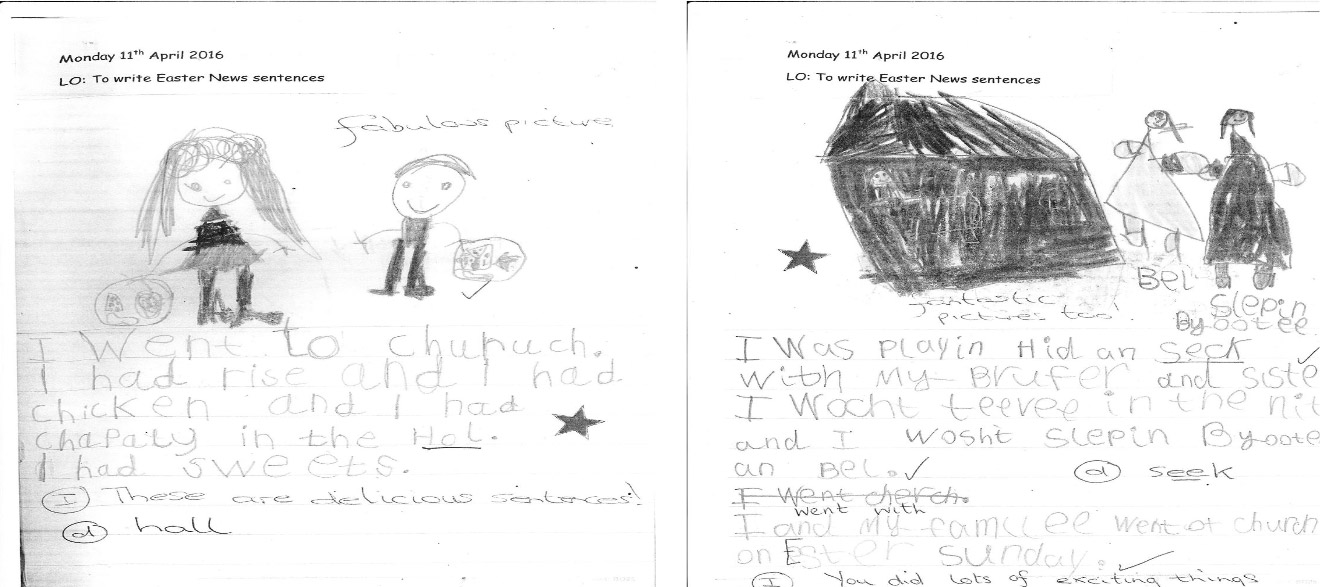
Examples of (Higher Ability) Reception (KG2/FS2) children’s work
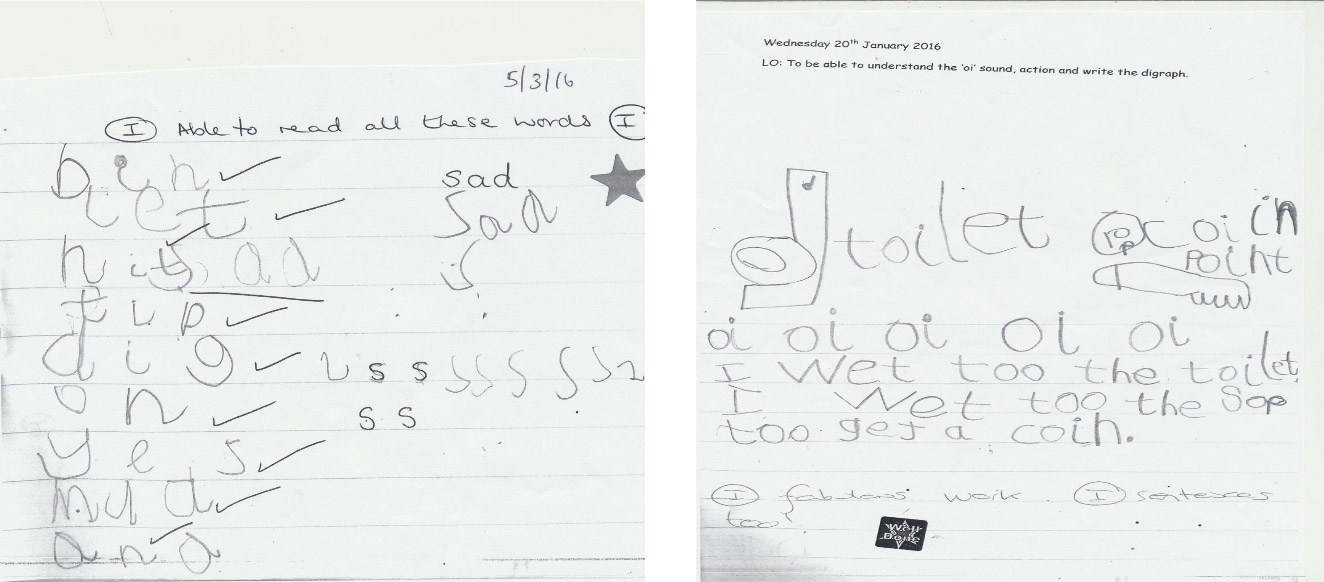
Examples of (Higher Ability) Reception (KG2/FS2) children’s work
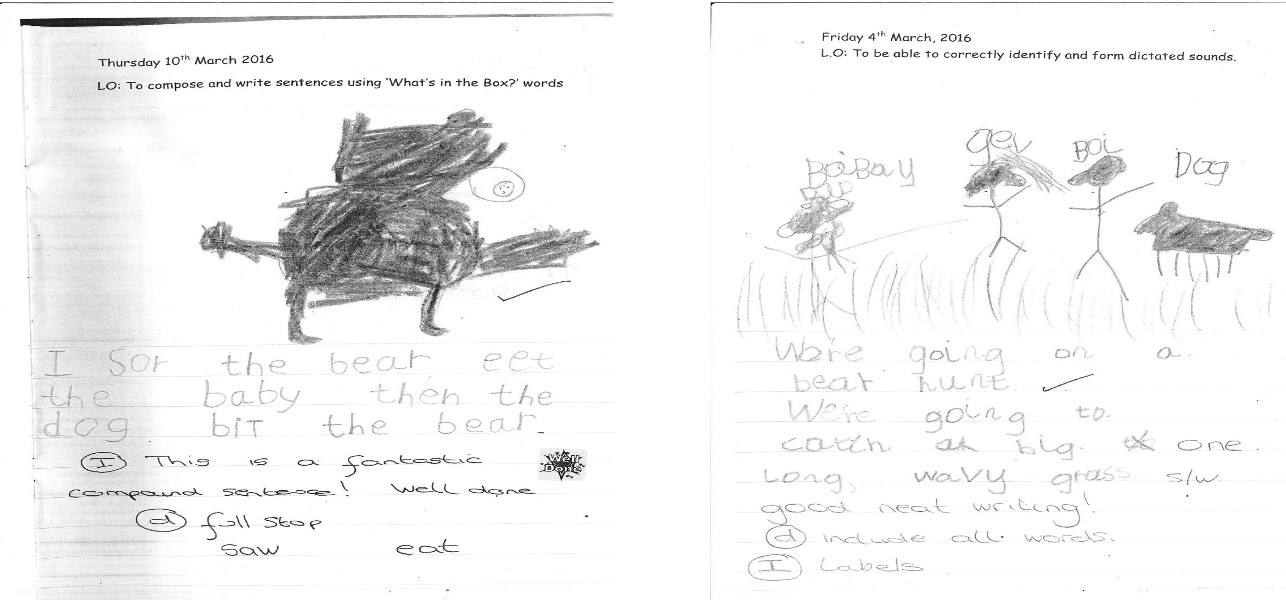
Examples of (Lower Ability) Reception (KG2/FS2) children’s work
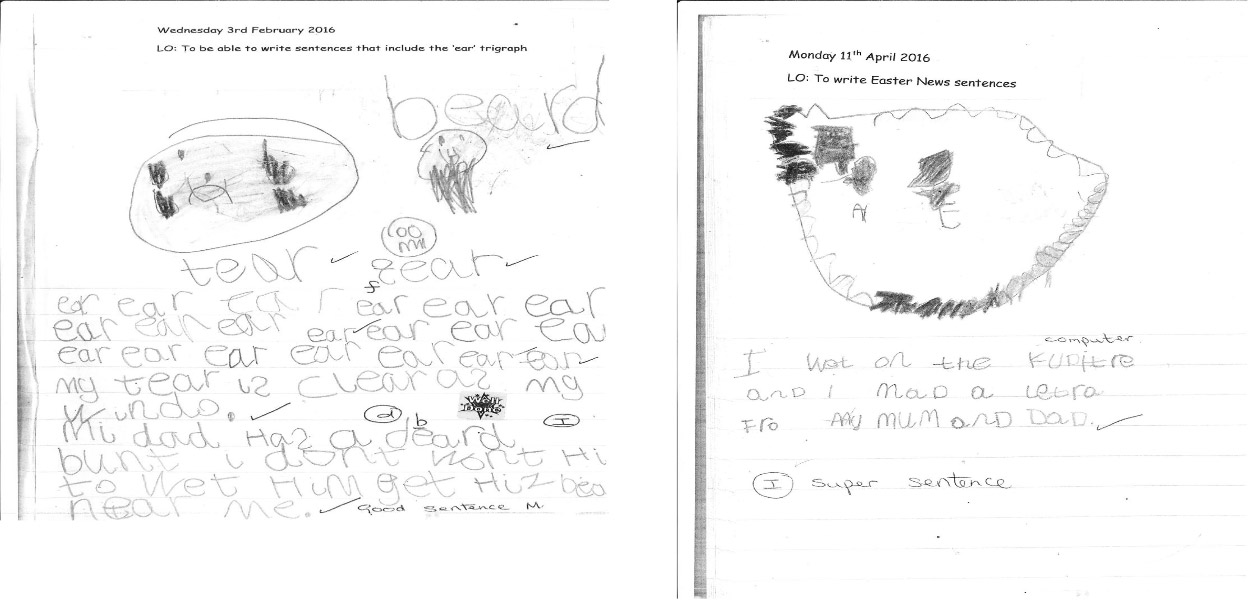
Examples of (Lower Ability) Reception (KG2/FS2) children’s work
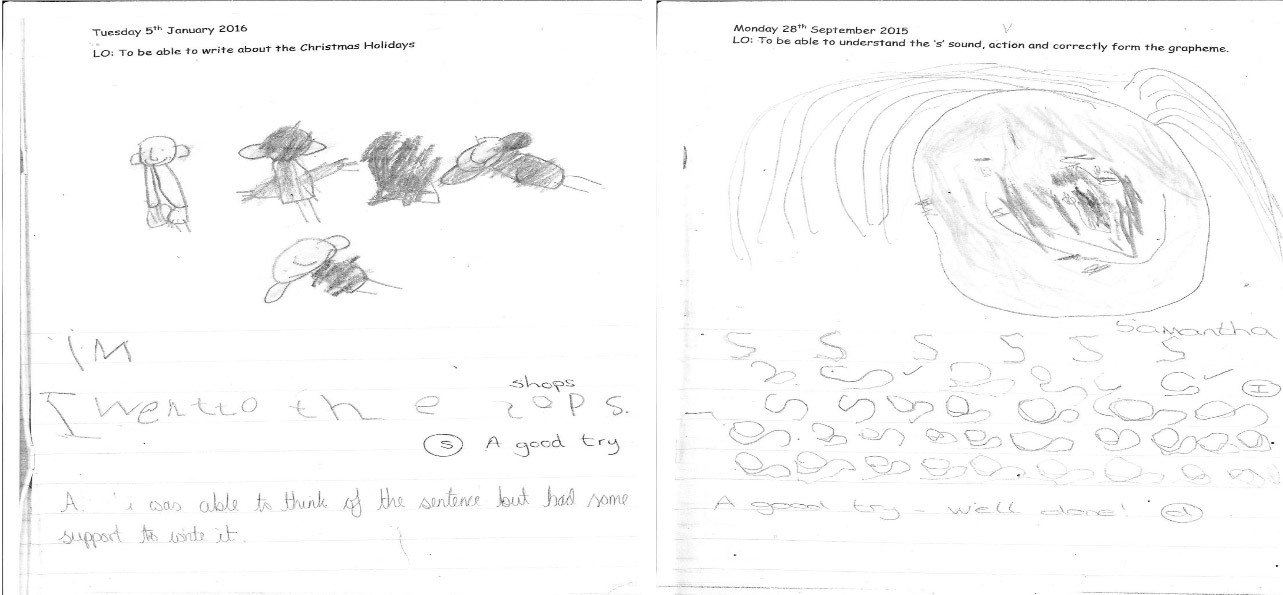
Examples of Reception (KG2/FS2) children’s ICT work
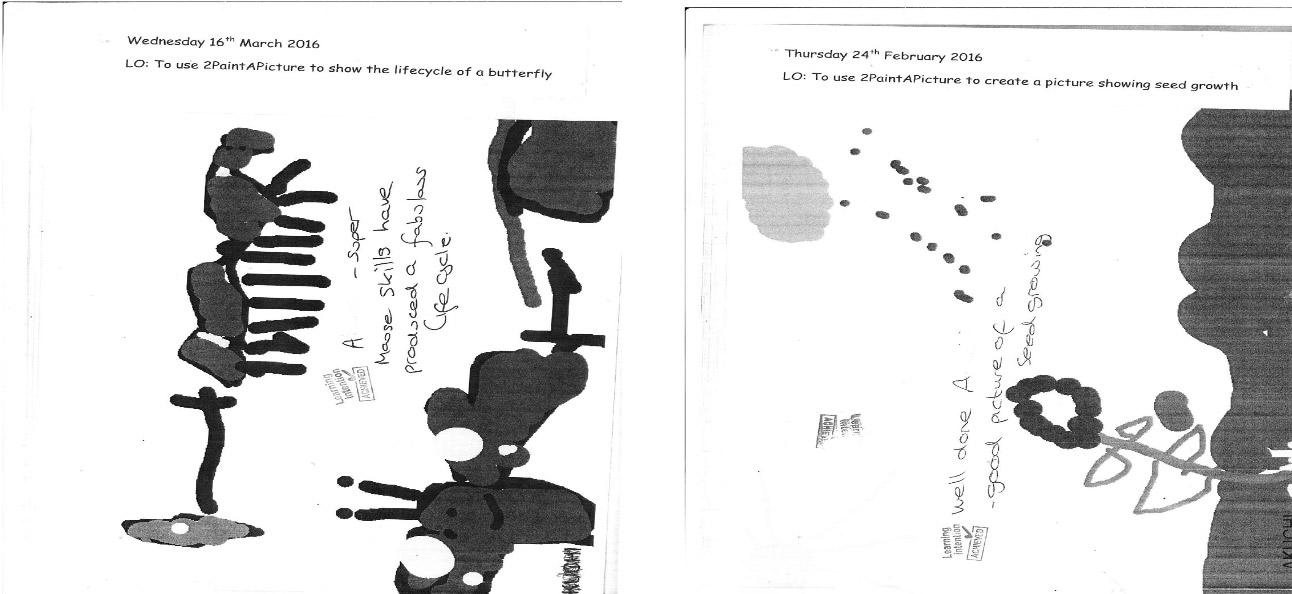
More examples of Reception (KG2/FS2) children’s ICT work
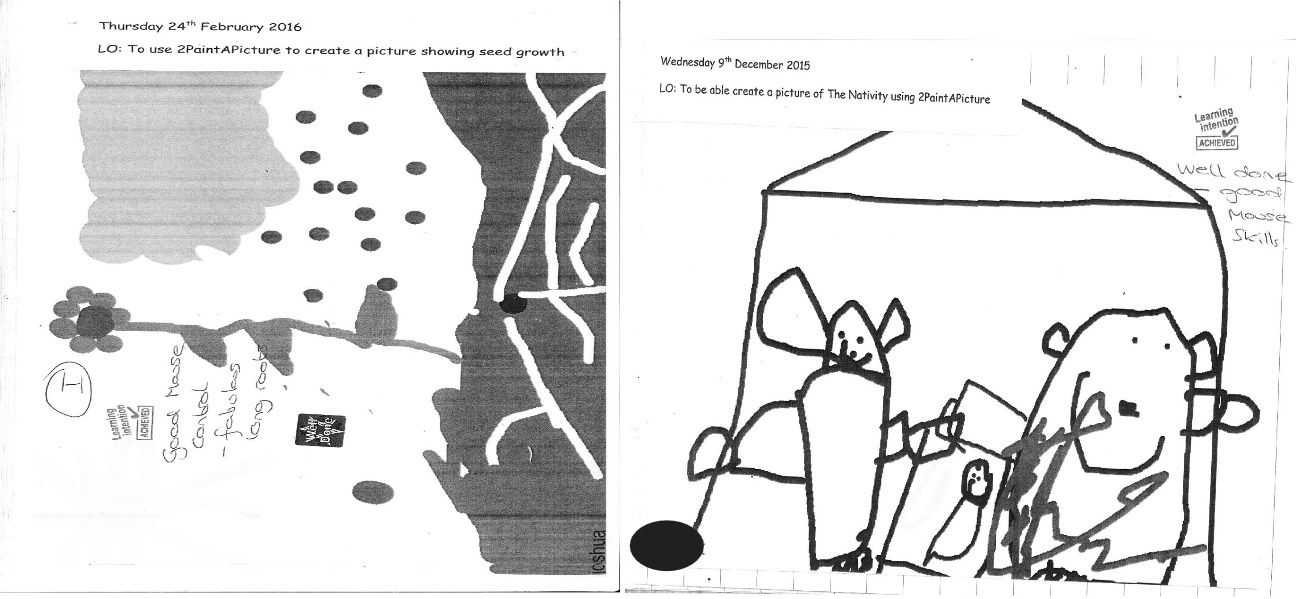
Examples of Reception (KG2/FS2) children’s ICT work
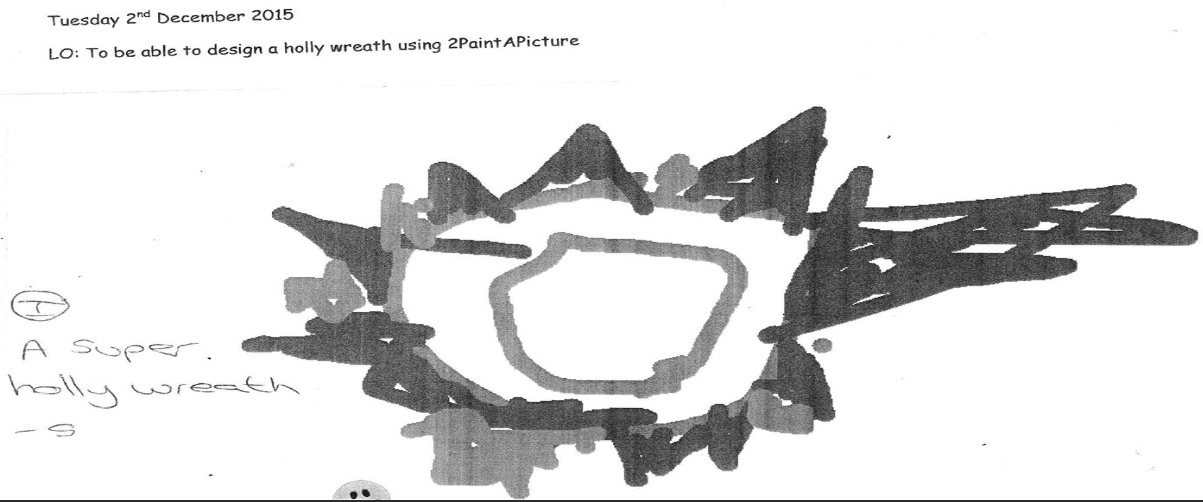
Points for reflection
- Review what the outcome of analysis tells you about children’s progress and interests and access to the range of activities
- Identify whether evidence gathered covers all areas of learning
- Evaluate progress from starting points
- Identify gaps in skills, knowledge or understanding in specific areas of learning
- Identify strengths in specific areas of learning and identify steps to move children forward
- Use outcome of assessment to identify and plan next steps for improvement
- Use outcome of assessment to guide team to support key groups of children
The outcome of an assessment model when it works well
- Regular use of detailed observations of children’s learning to precisely check and monitor progress. Staff consistently extend children’s learning and skilfully ask questions that encourage them to think and work things out.
- The extremely well-planned and stimulating environment encourages children to choose and explore independently, both indoors and outdoors
Thank you
For additional information about our courses or to book a training and consultancy visit, please visit our website on www.schoolspeerexchange.com or visit our Facebook page at www.facebook.com/schoolspeerexchange
References
http://www.early-yars.org/conference2012/presentations/Managing%20People%20Effectively.pdf
http://www.earlyyearscareers.comwww.urbanchildinstitute.org
https://pages.wiltshire.gov.uk/eyfs-planningexamples-pack.pdf
http://www.lancsngfl.ac.uk/curriculum/assessment/download/file/AfL%20in%20EYFS%20Project21.pdf
http://ncm.gu.se/media/kursplaner/andralander/singaporeforskola.pdf
www.islington.gov.ukpublicrecords/library/Education-and-skills/information/guidance

